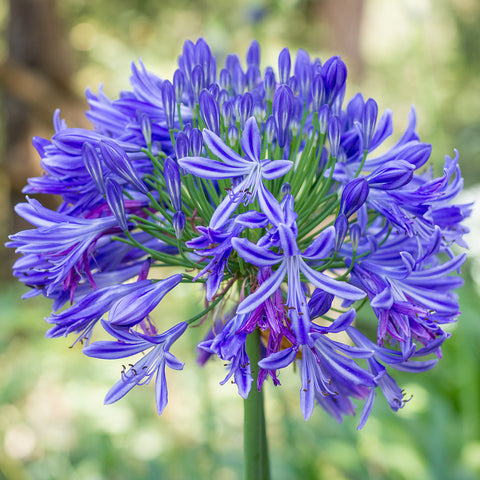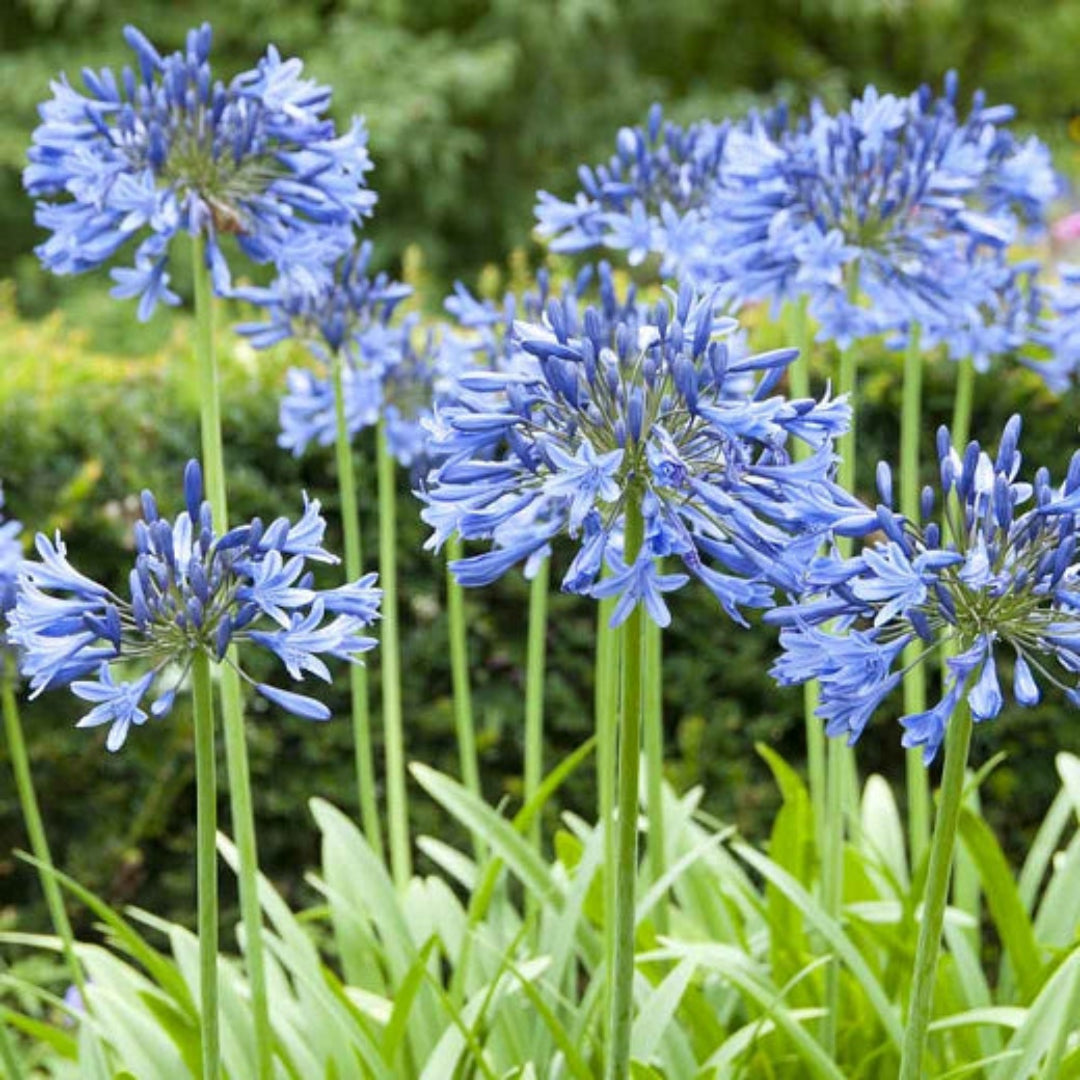Agapanthus Growing Conditions: Soil, Sunlight, and Watering
Agapanthus Growing Conditions: Soil, Sunlight, and Watering
Blog Article
Releasing the Secret to Successful Agapanthus Growing: Advice for a Flourishing Yard
In the realm of horticulture, cultivating agapanthus efficiently requires a tactical method that encompasses different aspects of plant care. By recognizing the nuances of agapanthus growing, one can create an atmosphere where these plants prosper and bloom perfectly.
Growing Agapanthus: Best Practices
When growing Agapanthus, correct soil prep work is necessary for making certain successful development and development of these attractive flowers. Agapanthus, typically referred to as Lily of the Nile or African lily, flourishes in well-draining dirt with a somewhat acidic to neutral pH level - Agapanthus. Prior to planting, it is vital to change hefty clay dirts with organic issue such as garden compost or peat moss to improve water drainage and offer necessary nutrients for the plants
To grow Agapanthus, choose a place that receives complete sunshine to partial shade, as this will promote healthy and balanced growth and abundant blooming. Dig an opening two times the size of the plant's origin ball and place the Agapanthus at the same depth it was formerly expanding. Delicately backfill the hole with dirt, weighing down firmly to get rid of any type of air pockets around the roots.
Water the recently grown Agapanthus thoroughly and proceed to maintain the dirt evenly wet, specifically throughout the plant's energetic growing period. Agapanthus. Using a balanced fertilizer once a month can even more sustain the plant's development and flowering. By following these ideal methods for planting Agapanthus, you can produce a stunning display of these exciting flowers in your garden
Ideal Dirt Issues for Agapanthus
For optimal development and flowering success of Agapanthus plants, guaranteeing the dirt problems are excellent is critical. Agapanthus likes dirt that is abundant in nutrients, so integrating a well balanced fertilizer throughout the expanding period can promote healthy development and lively blossoms.

Watering and Feeding Tips
To make sure healthy and balanced growth and dynamic blooms, proper watering and fertilizing techniques are important for effective Agapanthus farming. Agapanthus plants profit from routine watering, particularly during the expanding season.
When it pertains to fertilizing Agapanthus, a balanced plant food with equivalent components nitrogen, phosphorus, and potassium can More Info be used in the springtime to promote healthy and balanced growth and flowering. Slow-release plant foods are perfect for offering nutrients progressively over a prolonged duration. Stay clear of over-fertilizing, as this can bring about extreme foliage development at the cost of blossoms.
Furthermore, integrating raw material like compost into the dirt can enhance nutrient degrees and improve dirt framework, aiding in the total health and wellness of the Agapanthus plants. By following these watering and fertilizing ideas, gardeners can guarantee their Agapanthus plants prosper and produce spectacular displays of blossoms.
Pruning and Deadheading Methods
Appropriate trimming and deadheading methods play an essential function in keeping the health and wellness and visual appeals of Agapanthus plants, matching the essential methods of watering and feeding for effective farming. Trimming Agapanthus involves removing spent blossom heads, dead or yellowing leaves, and have a peek at this website general shaping of the plant to promote much better development. Deadheading, the procedure of removing discolored flowers, not only boosts the plant's look but likewise urges further flowering.
When deadheading Agapanthus, it is a good idea to trim off the flower stem at the base utilizing sharp, clean shears. This process reroutes the plant's power from seed manufacturing back into origin and vegetation growth, promoting a healthier and much more robust plant. Regular deadheading can extend the blooming duration of Agapanthus and protect against self-seeding, which can bring about congestion.
In regards to trimming, Agapanthus normally advantages from a light trim after blooming to clean up the plant and encourage fresh growth. Reducing the spent flower stems and eliminating any type of damaged or dead vegetation helps maintain the plant's vitality and general appearance. Nevertheless, it is vital to avoid cutting into the crown of the plant, as this can deteriorate its health and wellness.

Protecting Agapanthus From Pests and Diseases
Implementing reliable pest and disease administration strategies is critical to protecting the wellness and vitality of Agapanthus plants in cultivation. One usual insect that influences Agapanthus is the Agapanthus borer, a caterpillar that tunnels right into the plant, causing damage to the flowers and fallen leaves.
In enhancement to bugs, Agapanthus are at risk to diseases such as root rot and fungal fallen leave places. These problems can commonly be prevented by guaranteeing proper water drainage and staying clear of overwatering. If indicators of condition show up, affected components of the plant ought to be promptly eliminated to avoid additional spread. Fungicides might additionally be made use of as a therapy step, following the manufacturer's guidelines very carefully. By staying attentive and attending to parasite and condition issues quickly, gardeners can assist their Agapanthus grow and grow.

Final Thought
In verdict, successful cultivation of agapanthus needs correct planting strategies, perfect dirt conditions, ample watering and feeding, normal pruning and deadheading, and security from pests and illness. By following these techniques and tips, gardeners can make sure a flourishing garden filled with stunning agapanthus blooms. Agapanthus. Remember to maintain consistent care and focus to information to promote the wellness and long life of these sensational plants
When growing Agapanthus, correct dirt preparation is necessary for guaranteeing effective growth and development of these attractive flowers.Water the newly planted Agapanthus thoroughly and proceed to maintain the dirt uniformly damp, specifically throughout the plant's more energetic growing season.For optimum growth and blooming success of Agapanthus plants, guaranteeing the soil problems are optimal is important. When growing or hair transplanting Agapanthus, make sure the dirt is well-prepared to give the needed foundation for the plants to develop themselves efficiently. One typical insect that affects Agapanthus is the Agapanthus borer, a caterpillar that passages into the plant, causing damage to the leaves and flowers.
Report this page